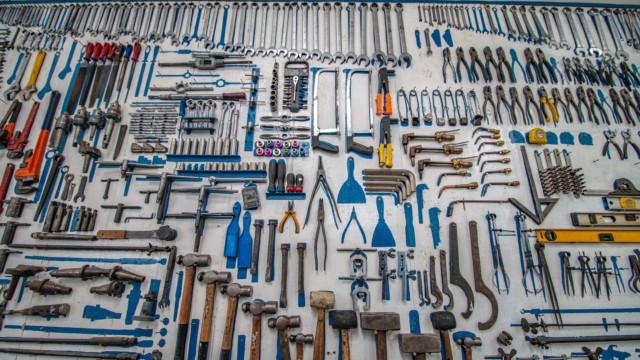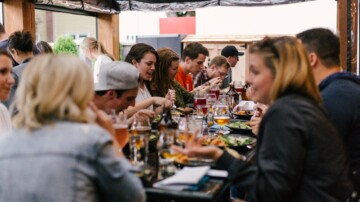Tools Galore in Online Communication – Women Who Tech 2009

Yesterday marked the second annual Women Who Tech telesummit, filled with experts and thought leaders working in technology, advocacy and nonprofits.
The first full session I was able to catch was “Tools Galore in Online Communications” moderated by Netsquared’s Amy Sample Ward with speakers Natalie Foster, Director of New Media for the Democratic National Committee, Rebecca Moore, Google Earth Outreach and Laura Quinn, Executive Director of Idealware.
The panelists each described a handful of tools to help with online communication, specifically for nonprofit causes and social activism.
Laura Quinn kicked off the panel with some of the most well-known yet under-utilized (or at least not utilized to their fullest potential) online tools: Websites and Email.
Websites:
- First and foremost: Your Website is You, Online!
- For many friends, your website is your organization
- This is critically important – the base “home base” of your online communication that everyone comes back to in order to find out more about you!
- Some website tools:
1. Content management system
2. Donor Database/CRM
Email:
- Email is a critical channel, not talked about enough!
- Email allows you to reach out to your constituents to let them know what you are doing
3. Ask them to take action
4. She also covered a few things to consider with email such as subject line, byline, graphic design and layout, content - My favorite thing Laura said was her point that “just because you use the “new stuff” doesn’t mean you should ever drop email”.
Natalie Foster started out by harping on the fact that the first thing any organization should do is decide on what tools to use by knowing what you want to get out of the tools and prioritizing their use by first embracing the ones with the biggest ROI (those that can be traced back to provoked action, awareness building, raising funds, etc). The tools and points she covered included:
Social Networks
- Facebook being the major player here with general growth at this point including:
- > 200 million active users
- Fastest growing demographic is 35 and older
- > 3.5 billion minutes spent on FB each day
- > 20 million users update statuses at least once a day
- > 4 million users become fans of Pages each day
- A few key examples she gave on advocacy and nonprofit success in social networks included:
- MyBarackObama.com, a good example of this in action
- Greenpeace building up 90,000+ friends on MySpace and communicating with this audience in that space
- Natalie’s ending tip for social networks? Look at who’s doing well in these spaces and follow their lead by learning from their successes.
- Often integrated with other forms of social media
- Estimated 5-10 thousand new accounts registered each day
- Only 5% have more than 250 followers
- Only 0.8 % have more than 1,000
- Example of this being used effectively and in meaningful way:the White House opened Twitter during swine flu outbreak to take questions from the general public and the next day had expert answer questions on the White House blog.
Rebecca Moore then discussed at length the new generation of online (and easy to use) mapping tools – “neo geography” – and how it helps to communicate to and mobilize others through data visualization. The one point Rebecca really hammered on was the idea of “galvanizing community action” through visualizing data, technical issues and complex problems.
Google Earth Outreach itself got its start when a hard to understand public notice of redwood logging plan map was sent out through mail and no one could truly grasp the issue at hand. By remapping the plan in Google Earth and showing how close the logging would be to day cares, schools etc., all through visualizing the information and showing complex issues in an easy-to-understand fashion, the implications of the matter were fully understood by the local community and they were able to take appropriate action against it.
Other examples provided in the panel:
- End Mountaintop removal at ilovemountains.org
– A visual representation that allowed anyone to enter in their location and see how removal of mountain tops for coal mining directly impacts them - USHMM : Crisis in Darfur
– Visualized destruction in Darfur that was being publicly refuted
– 50% increase in traffic to site
– International visits went from 23-52%
(More examples can be found on the Google Earth Outreach page of nonprofit case studies.)
To wrap up the panel, Amy Sample Ward asked two ending questions and received the following responses from the panelists:
1. What do you think about the idea of orgs only using social media tolls as an online presence instead of a traditional Website?
– (Laura)Organizations need to know what the goals are of their website and what they achieve with social media tools alone (versus in conjunction with a standalone site)
– (Natalie) Let the numbers decide: look at people on Facebook vs people who are only online. And remember that the higher the barrier for people to access your work, the harder it will be to get them to you.
– (Rebecca)This may be more of a generational issue down the line with the younger generation preferring more social networks and sites to regular sites. Yet to be determined.
2. We are all after real world changes, so how do we measure our use of these tools on real world impact?
– (Laura) Know what your goals are and link them to things that can be measured. On a website, you can see analytics and quantifiable email metrics that you can assess and know what’s been achieved to a certain extent.
– (Natalie) These are all tactics in larger campaigns. Look at the larger goal before jumping into the tool Her point: making more friends on Facebook doesn’t necessarily mean you’ll win the campaign.
– (Rebecca) Don’t get lost in “sexiness” of tools. For any tool, what can it offer it your overall goals and strategy is an important question to ask.
The second WWT was a rockin good time, even making its way onto the top Twitter trends of the day, and there is more great coverage on the event on a ton of other blogs. Here’s a few posts covering the event worth mentioning:
Women Who Tech Telesummit Today (via Fast Company)
My experience at Women Who Tech (Via Web Teacher)
Women Who Tech (via the Sunlight Foundation)
Women Wired Tweet LiveStream for 2009-05-13 (via Women Wired In)
Did you attend the event or cover it on your blog, too? Drop me a line in the comments and I’ll add you to the ongoing list of coverage!


